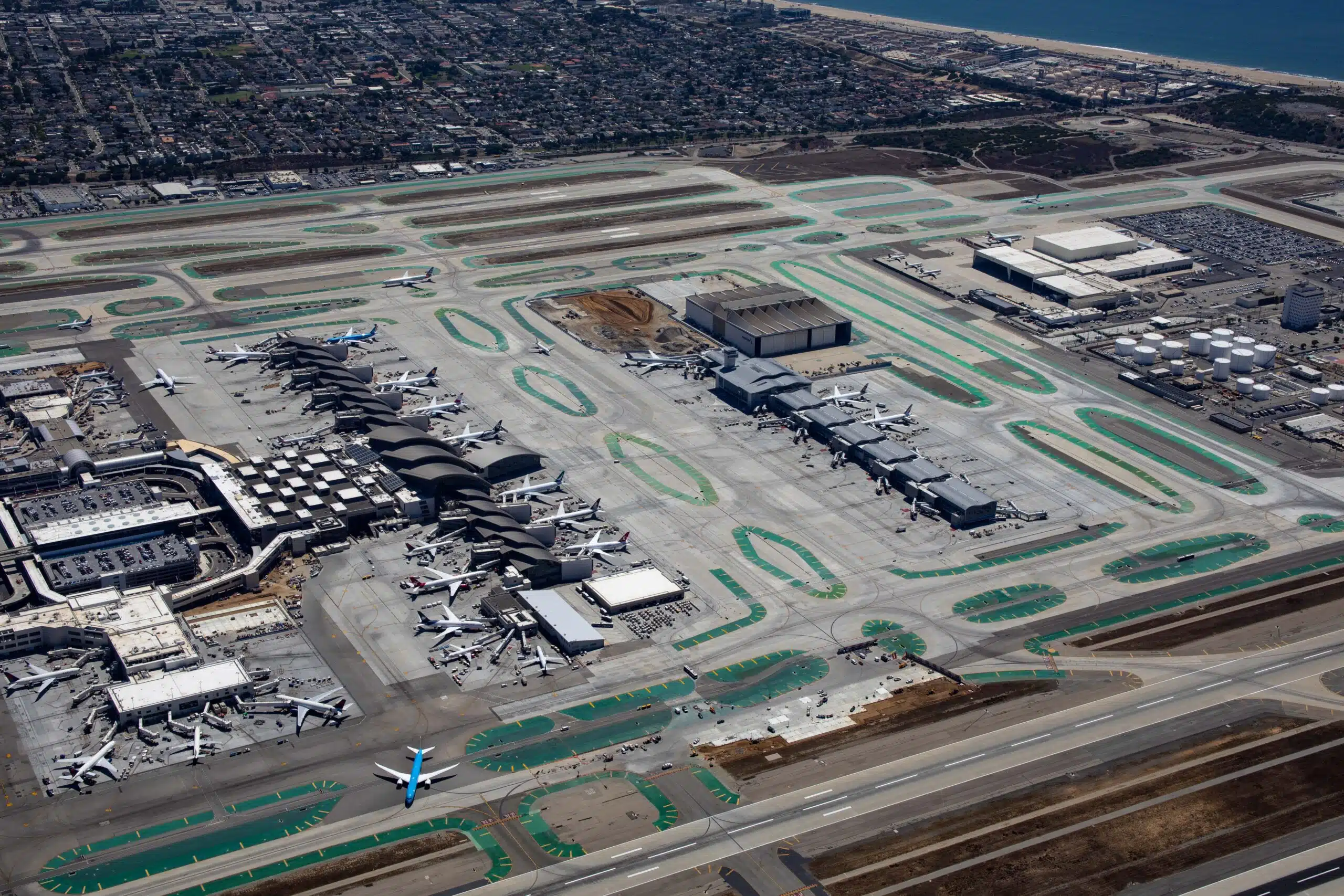- June 4, 2024
- Perspectives, Trending Topics
New Opportunities for Airports: A Look at the FAA Reauthorization Act of 2024

Great news for airports! On May 16, 2024, the Federal Aviation Administration (FAA) Reauthorization Act was signed into law. This act represents a significant investment in US airport infrastructure, paving the way for enhanced safety, improved passenger experiences, and a brighter future for our aviation network.
At Kimley- Horn, we understand the challenges and opportunities facing airports today. With decades of experience in airport planning and design, we’re here to help you navigate the intricacies of the new act.
Let’s delve into some key provisions of the FAA Reauthorization Act that will directly impact airports.
Boost in AIP Funding
The new FAA act authorizes a significant increase in Airport Improvement Program (AIP) funding, jumping from $3.35 billion to $4 billion annually through FY2028. This translates to more resources for critical projects across the nation.
New AIP Reforms
The act introduces several reforms to streamline the AIP process. These include:
Price Adjustment Provisions: The FAA can now account for inflation in labor and materials when awarding grants, mitigating cost overruns.
Small Airport Support: Non-hubs and non-primary airports will benefit from Letters of Intent (LOIs) issued by the FAA, allowing for better project planning and financing for large capital projects. Previously, LOIs were limited to capacity projects at major airports.
Other AIP provisions to help small airports:
Increases cap on discretionary funds for terminal projects at non/small hubs from $20 million to $30 million.
Reduces local match for some airports to 5% in FY2025 and FY2026.
AIP formula changes:
Reduces turnback for large/medium hubs from 75% to 60%.
Boosts minimum entitlement to $1.3 million.
Creates a sliding scale that ramps up from the $150,000 non-primary entitlement to the $1.3 million minimum primary apportionment.
Increases funding for non-primary commercial services and general aviation airports from 20% to 25% of AIP.
Focus on Resilience: Replaces the $100 million AIP supplemental program with a $200 million per year discretionary grant program dedicated to airport resilience and runway safety projects.
Alternative Project Delivery: Expands the existing program, allowing airports to utilize alternative methods for project delivery and potentially expedite project completion.
Energy Efficiency: Broadens the scope of airport energy assessments to include both airside and landside operations, allowing for a more comprehensive approach to energy management. This section also permits AIP funding for airside energy projects, promoting energy-efficient upgrades on the airfield.
Simplifying Airport Grants
The FAA Reauthorization Act allows airports to incur the costs of utility relocation and work site preparation costs before securing an AIP Grant agreement. Previously, these costs could not be included until the grant was awarded, potentially delaying project timelines.
Electric Aircraft Infrastructure
The act establishes a five-year pilot program allowing up to 10 airports to acquire and install charging equipment and infrastructure for electric aircraft, fostering innovation and sustainability in the aviation industry.
Staying Informed and Taking Action
To learn more about the details of the FAA Reauthorization Act, we recommend visiting the FAA’s website.
The FAA Reauthorization Act presents a wealth of opportunities for airport development. At Kimley-Horn, we are here to help you understand how these provisions can benefit your specific airport. With our expertise in navigating grant programs, designing efficient infrastructure, and implementing sustainable practices, we can be your partner in achieving your airport’s goals.
About the Expert

J.J. Morton
J.J. is a nationally recognized leader in the aviation practice at Kimley-Horn with more than 25 years of experience. His extensive portfolio encompasses critical airport infrastructure projects across the US, solidifying his reputation as a trusted advisor in the aviation industry. His leadership extends to a wide range of airport elements, from runways and taxiways to aprons and deicing facilities. He possesses a deep understanding of airspace considerations, operational efficiency, and FAA regulations, ensuring projects meet the highest safety and functionality standards. His proven track record, including high-profile projects at major hubs like Chicago O'Hare and Detroit Metro, speaks volumes about his expertise and leadership in the aviation field.
